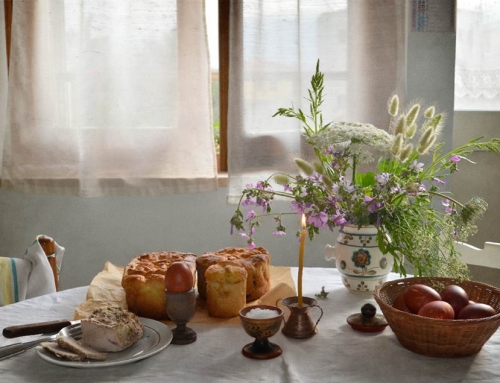During the Holidays, finding and keeping the perfect Christmas tree fresh can be as elusive as seeing Santa.
There are dozens of popular varieties to choose from. And no matter which kind of tree it is — fir, spruce or pine — the goal is always to maintain it green and fresh for as long as possible. For Russians, this means keeping the needles on the tree and pliable until the New Year.
Until the end the Soviet era, Christmas trees — called “yolka” — were associated strictly with the New Year. The New Year holiday pretty much centered around the fresh pine tree.
Every kid growing up in the Soviet days knows that magic happened around the yolka. It lit up when children screamed. It’s where Russian Santa, Ded Moroz left presents — tucked neatly underneath the tree.
Many of us can still recall the fresh fragrance of pine on a snowy winter night. Having a fresh yolka was a luxury in those days. Creative types pieced together fresh trees branch by branch, and decorated with mandarins, colorful foiled candies, and snowflakes cut out of paper.
Today, lots of us still celebrate the New Year with a yolka. This means that we need to keep our trees fresh and fragrant at least one week past Christmas.
In an effort to discover the holy grail of how to keep a Christmas tree fresh, we spritzed it with Spite, added Alka Seltzer, sweetened it with sugar, and sometimes just went with plain water.
We experimented A LOT and came up with five life hacks to keep a Christmas tree fresh.
Our top five life hack to keep a Christmas tree fresh.
Don’t let it sap over
When fir trees are cut, sap oozes out of the bottom of the trunk creating a seal. This prevents the tree from drinking water. Cutting off half an inch to an inch from the bottom of the trunk helps the tree absorb enough water to stay hydrated.
Many Christmas tree lots will cut the bottom off for you. Just make sure you are able to get in into a basin with water within a few hours. If its going to take you longer than a couple of hours, cut another half inch once you get home.
Also, those holes that Christmas tree lots like to drill into the center of the trunk are totally useless. They do not help your Christmas tree absorb more water, so tell the lot manager to skip the procedure altogether.
Water twice a day
Fresh trees drink up to a gallon of water per day. And most consume nearly 70% of its water in the first week. In fact, most of the tree’s weight is in water. Just think of how light the tree is when the needles have dried.
Remember that the tree is not just a decoration, it’s a living and growing organism that needs water to stay alive. Watering a Christmas tree twice a day will ensure your tree has sufficient amount of nutrients that will help it retain its beauty and fresh pine scent.
Use plain water
You may have heard that adding Sprite, aspirin, bleach or fertilizer to a Christmas tree water basin will make it last longer. This is simply not true.
Our experiments confirm what Christmas tree farmers have been saying for years — plain tap water is the best, and most inexpensive way to keep a Christmas tree fresh and hydrated. Because the more hydrated the tree is, the longer it will last.
Keep it cool
Christmas tree love being outside in the cold. Their natural habitat is a cold, dark forest. So while many holiday postcards feature Christmas trees next to a fireplace, it’s probably the worst possible place you can choose to display one.
Fireplaces and heaters, dry out the tree much faster. The warm air dries out the needles, making them brittle and no longer fragrant. So if you want your tree to last a long time, find a cooler and more damp place in the house for it.
Give it room
Once your Christmas tree is indoors, the branches will naturally relax and open up. Ornaments will also weight down the branches, so take that into consideration as you decorate.
Make sure the tree has enough space to sprawl out without getting in the way. If the Christmas tree is set up next to a wall, there should be enough space for the tree to let down its branches without touching the wall.







Leave A Comment